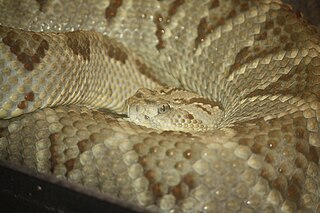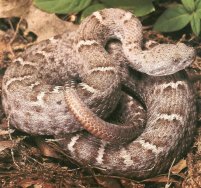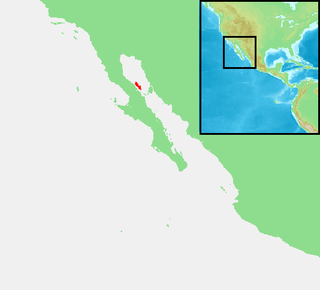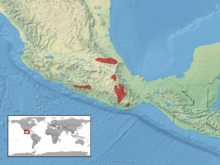
Crotalus scutulatus is a highly venomous pit viper species found in the deserts of the southwestern United States and central Mexico. It is perhaps best known for its potent neurotoxic-hemotoxic venom, which is considered one of the world's most potent rattlesnake venoms.

Crotalus basiliscus, known as the Mexican west coast rattlesnake, Mexican green rattler, and also by other names, is a species of pit viper in the family Viperidae. The species is endemic to western Mexico. Like all other pit vipers, it is venomous. The specific name, basiliscus, is derived from the Greek word for king, βασιλισκος, and alludes to this snake's large size and potent venom. No subspecies are currently recognized.

Crotalus mitchellii is a venomous pit viper species in the family Viperidae. The species is endemic to the Southwestern United States and adjacent northern Mexico. The species was named in honor of Silas Weir Mitchell (1829–1914), an American medical doctor who also studied rattlesnake venoms. Five subspecies are currently recognized, including the nominate subspecies described here.

Crotalus enyo, commonly known as the Baja California rattlesnake or Lower California rattlesnake, is a pit viper species native to the coast and islands of northwestern Mexico. Like all other pit vipers, it is venomous. Three subspecies are currently recognized, including the nominate subspecies described here.

Crotalus ravus, commonly known as the Mexican pigmy rattlesnake or Mexican pygmy rattlesnake, is a venomous pit viper species, found only in Mexico. Three subspecies are currently recognized.

Crotalus simus is a venomous pit viper species found in Mexico and Central America. The specific epithet is Latin for "flat-nosed", likely because its head is blunt compared with lanceheads (Bothrops). Three subspecies are recognized, including the nominate subspecies described here.

Crotalus oreganus, commonly known as the (northern) Pacific rattlesnake, is a venomous pit viper species found in western North America from the Baja California Peninsula to the southern interior of British Columbia.

Crotalus atrox tortugensis is a venomous pit viper subspecies found only on Tortuga Island in the Gulf of California.
Crotalus intermedius omiltemanus is a venomous pitviper subspecies found in Mexico in the state of Guerrero.

Crotalus intermedius gloydi is a subspecies of venomous pitviper in the family Viperidae. The subspecies is endemic to Mexico in the states of Oaxaca and Puebla.

Crotalus pricei is a species of venomous snake, a pit viper in the family Viperidae. The species is endemic to the southwestern United States and northern Mexico. Two subspecies are recognized.

The Mexican lance-headed rattlesnake or lance-headed rattlesnake is a venomous pit viper species found in central Mexico. No subspecies is currently recognized.

Crotalus pusillus is a venomous pit viper species found in west-central Mexico. No subspecies are currently recognized.

Crotalus stejnegeri, commonly known as the Sinaloan long-tailed rattlesnake or just long-tailed rattlesnake, is a venomous pit viper species in the family Viperidae. The species is native to western Mexico. There are no recognized subspecies.

Crotalus transversus is a venomous pit viper species found in central Mexico, known from less than 20 specimens. No subspecies are currently recognized.

Crotalus triseriatus is a venomous pit viper species found in Mexico. Two subspecies are currently recognized, including the nominate subspecies described here.

Crotalus willardi obscurus is a venomous pitviper subspecies found in northwestern Mexico and the Southwestern United States.

Crotalus angelensis, or the Ángel de la Guarda Island speckled rattlesnake, is a pitviper species endemic to Isla Ángel de la Guarda in the Gulf of California, Mexico. Like all other pitvipers, it is venomous. It is sometimes treated as a subspecies of Crotalus mitchellii.

Crotalus oreganus caliginis is a venomous pit viper subspecies endemic to South Coronado Island, Mexico.
Crotalus mitchellii muertensis is a venomous pitviper subspecies endemic to El Muerto Island, Mexico. It is sometimes treated as a full species, Crotalus muertensis.




















